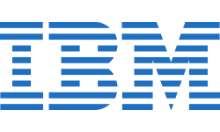


 Large buildings and facilities with dozens of digital devices and networking needs will require a comprehensive architecture that is easy to manage, upgrade, and maintain.
Large buildings and facilities with dozens of digital devices and networking needs will require a comprehensive architecture that is easy to manage, upgrade, and maintain.
For all of these things to happen, and for all kinds of connectivity to be fast and avoid downtime, it is important that a networking system makes use of professional IT services, especially when the architecture is being laid down.
Most of the instances of the use of networking cables is limited to offices, buildings, institutions, banks, and other large spaces that use several computers and related peripherals.
These are still not the only uses of comprehensive networking systems. While less common than in large spaces serving several people, networking systems can also be set up at home, or for the purpose of leisure, to connect gaming consoles and PCs for instance.
Types
A network cable is used to move data between PCs, servers, storage networks, and routers. This makes the basic component in the communication or transfer of data from the involved devices in the network.
Fiber Optic
Fiber optic cables are widely known for a number of advantages, including their ability to carry high bandwidths, along very long distances. The cable type is often used in wide-area network installations where the wires have to be placed underground, or they are to be placed outdoors.
The cables are made of glass and transmit data through light pulses, which is what helps them remain synonymous with extremely fast and reliable internet connectivity.
Single-mode and multimode are the two most common types of fiber optic cables, and a network cabling company in Dubai usually uses the former over long distances owing to its ability to deliver high speed, while multimode cables are used over smaller distances and networks owing to cost-effectiveness.
Twisted Pair
 This is the most popular variety of network cabling in most countries today and first came to be used more than two decades ago. Speeds and capabilities moved from 10 Mbps at first, to 10 Gbps in the modern day and age.
This is the most popular variety of network cabling in most countries today and first came to be used more than two decades ago. Speeds and capabilities moved from 10 Mbps at first, to 10 Gbps in the modern day and age.
The cable consists of multiple wires that run in pairs to prevent interference from other devices or cables.
Other Older Types
There are several other types of network cables available even today, which have dwindled in use and importance.
One of these is the crossover cable, which was used during the time when computers did not yet have Ethernet connectivity built-in. These cables were used mostly to transfer data between two PCs.
For more info, visit: Rounakcomputers.com